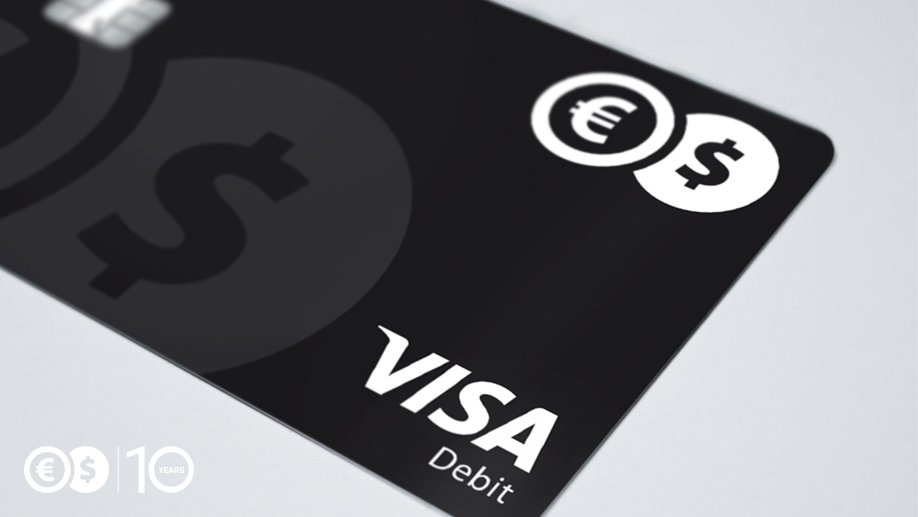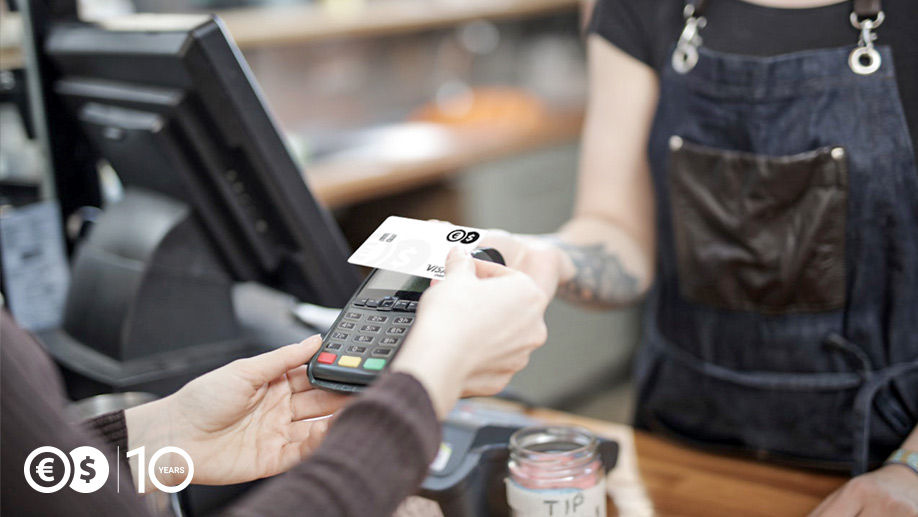Do the currency conversion fees for a transaction made abroad bother you? Do you ever know exactly how much you will pay for purchases in foreign currency? Until recently, Polish consumers faced these and many other problems. The solution to all these issues is a multi-currency card, offering not only the possibility of saving money but also a great convenience of use.
Table of contents
What is a multi-currency card?

To understand what a multi-currency card is, look at the example. Just a few years ago, when planning a holiday in Greece, you had to take cash with you or order (in advance) a currency card held in the euro. The euro account holder then had to convert the funds and transfer them to an appropriate bank account.
All of that had to be done before going abroad, predicting most of the costs they could expect on the spot. Of course, at any time they could use the card kept in the currency of their home country, but in such a case they were never sure how much exactly they would pay for example for dinner in a restaurant.
Payment using, e.g. PLN card abroad is, of course, possible. In this case, the amount to be paid in EUR is converted by the bank and our account will be debited in PLN. However, we do not know the exact exchange rate at which the payment will be converted. Banks very often take advantage of this fact by using the exchange rate which is not cost-efficient to the customer.
Furthermore, there may be additional fees and commission. Many banks charge an extra 3% of the transaction amount in such a case, which with the more significant amount or high frequency of payments, may eventually turn into a considerable sum. This is the money that can be saved due to a multi-currency card.
A card of this type is assigned to several or even more bank accounts held in different currencies. When making a payment, it automatically recognizes the currency of the transaction and collects the amount from the relevant account. Therefore, if the payment is made in USD, the funds will be taken from the account held in that currency.
By using a multi-currency card, we can avoid most of the unexpected surprises associated with additional currency conversion fees, and nothing else is charged from our account. If we have paid 40 EUR for lunch at a Greek seaside restaurant, our account balance in EUR will be reduced by precisely that amount.
Where can you pay with a multi-currency card?

The multi-currency card works the same as a traditional payment card in terms of its functionality. It can be used in stationery shops, restaurants, service points and while shopping online. Cash withdrawals from ATMs are also available, although it is worth noting the limitations issued by payment institutions. It may turn out that for free we can withdraw only a small amount per month, and any additional money withdrawal will be charged.
There is no doubt that a multi-currency card is becoming increasingly popular for payments made abroad. The customer can then avoid unnecessary currency conversions at an unfavourable rate. This method of payment is also useful when ordering something from an online shop overseas. In such a case, we can decide to pay in the local currency, without giving the intermediaries opportunity to make some money out of currency conversion.
The multi-currency card can also be used for daily payments in your home country's currency. Nothing stands in the way of making it the main payment card and using it every day, doing shopping in grocery shops or paying for fuel at a petrol station. This is an interesting alternative to a regular account, especially since holding such an account together with a card is often free of charge.
Multi-currency card — who should use it?
Who might find a multi-currency card useful? The possibilities it offers will be beneficial mainly for those who travel abroad frequently, and not only it applies to countries in the eurozone countries, the United Kingdom, Switzerland or Scandinavia. A multi-currency card can also prove to be cost-effective in less often visited countries (e.g., in Asia), where the most popular currencies are not widely available.
Travellers, business people — who else can benefit from a multi-currency card? Virtually everyone — you don't even have to leave home to save on payments in foreign currency. The beneficiaries of such a solution may be, e.g., Internet users who shop online, where you can often buy something much cheaper.
Pay attention to DCC at ATM withdrawals
One of the principal advantages of multi-currency cards is the possibility of withdrawing cash from ATMs abroad. However, when using such an option, one should be careful about the DCC (Dynamic Currency Conversion) mechanism, which is unfavourable for the customer. What is it about?
After inserting a multi-currency card into an ATM, the system will recognize the main currency of our card. So, for example, it may be the Polish zloty. Therefore, the system will suggest a currency conversion at its own rate so that the bank does not have to do it. In such a case, PLN would be taken from our account.
The procedure is very often disadvantageous due to unattractive currency rates. Since our card supports multiple currencies at the same time, one should not agree to such an operation. When information (usually in English) about a currency conversion proposal appears on the ATM display, it should be rejected. This will allow you to withdraw the amount in the proper currency from your account — for example, in Greece as mentioned above it will be the euro.
It is not profitable for multi-currency cardholders to use DCC, as their cards automatically convert transactions at usually much better rates.
The DCC mechanism can also be found in some payment terminals. If the terminal's screen displays information about the possibility of currency conversion during payment in a stationary store or restaurant, you should reject it and decide for a transaction in the local currency.
The advantages and disadvantages of multi-currency cards
Much of the benefits of multi-currency cards have already been mentioned before. The most significant one is, of course, the possibility to save money on payments in foreign currencies. Another, equally important advantage is quick access to bank accounts held in different currencies.
Consumers who use multi-currency cards also appreciate the convenience and ease of usage during travel. They can see most of the issues related to operation in dedicated applications. They can also change limits or view payment history. The users have immediate access to their funds.
Some multi-currency cards are issued for free or for a symbolic fee. Institutions providing such a service increasingly often resign from fixed costs connected with keeping accounts even in a dozen or so foreign currencies, which means that having a multi-currency card does not cost us anything — also if we do not use it too frequently.
Do the multi-currency cards have any flaws? Not all services of this type offer access to numerous currencies. They are usually limited to the most popular ones — the euro, the US dollar, the Swiss franc, the pound sterling or the Japanese yen. This may not meet consumers' needs, especially if they travel to more exotic countries. Multi-currency card owners must also be careful with the DCC mechanism when withdrawing money from ATMs.
Multi-currency card from Conotoxia.com
Conotoxia.com offers a real multi-currency card in response to the needs of present-day consumers. It provides immediate access to many currencies. Users are able to pay in most currencies of the world. They get accounts in 20 different currencies, which eliminates the need to open dedicated currency accounts with banks.
All of this for free, without fixed costs, commission or hidden conversion fees. The portal does not require minimum payments to the account. You are able to use the card both on a daily basis and only a few times a year — e.g. during a holiday trip.
More information about Conotoxia.com multi-currency cards can be found at: https://conotoxia.com/multi-currency-cards.



